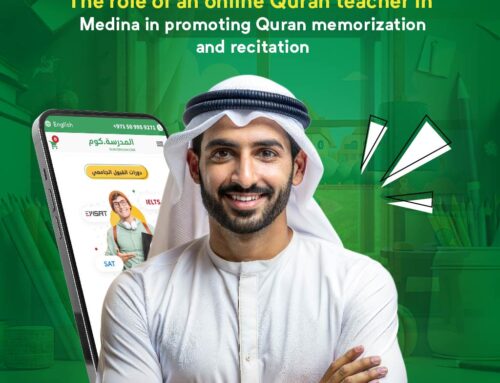
If you were a 12th-grade Student who lives in the united arab emirates, you might be concerned about EMSAT test registration, The Test has variable dates throughout the year, first of all, you have.
Elmadrasah.com: The Optimal Choice for Teaching International Curricula with High Quality
In a rapidly advancing world of technology and evolving learning patterns, choosing the right educational platform has become vital to ensure maximum benefit from distance learning. In this context, The School Dot Com emerges as an optimal choice for teaching international curricula with high quality.
The platform combines advanced technology with international educational curricula to provide a distinguished learning experience that meets the needs of students and enables them to achieve their educational goals efficiently. In this article, we will explore how The School Dot Com is the optimal choice for teaching high-quality international curricula and how it contributes to enhancing the learning process and the success of students.
Understanding International Curricula: Principles and Concepts
In an era of globalization and technological advancement, international education has become a significant focus in the field of education, as many seek to attain a global educational standard that keeps pace with global developments and challenges. International curricula reflect an educational vision that transcends geographical boundaries and focuses on developing students’ skills and preparing them to interact with a multicultural and changing society.
Understanding International Curricula:
International curricula are an educational approach based on global standards and principles in education, focusing on developing critical and creative thinking skills, and enhancing deep understanding of subjects through interactive and innovative methods. International education aims to equip students to face the challenges of the twenty-first century and contribute to building a sustainable and prosperous future.
Principles and Concepts:
- Global Perspective: International curricula rely on a comprehensive and global perspective that reflects the challenges and needs of the international community. International education revolves around values of mutual respect, peaceful coexistence, and cultural diversity.
- Active Learning: International curricula encourage active and interactive learning where students take responsibility for building their knowledge and developing their skills through practical experiences and research projects.
- Innovative Education: International curricula seek to apply an innovative approach to education that relies on modern techniques and advanced teaching methods that combine traditional education with modern technology.
- Theme-Based Learning: International education is characterized by presenting educational materials through engaging and theme-based topics centered around global issues such as sustainability, human rights, and innovation, which encourages critical thinking and analysis of global problems.
- Continuous Assessment: International curricula rely on a continuous assessment process that reviews students’ progress and motivates them to continuously develop and achieve their full potential.
International curricula and the principles they are based on offer significant opportunities to improve the quality of education and develop students’ skills to enable them to face the challenges of the times. Understanding these principles contributes to developing a distinguished educational approach that helps build a generation with the knowledge and skills necessary for success in a changing global society.
The Difference Between British and American Curricula: A Comparative Study
Choosing the right educational curriculum for our children is crucial in securing their educational and professional future. Among the globally renowned curricula, British and American curricula stand out with two distinct educational approaches that differ in structures, concepts, and teaching methods. Let’s take a deep dive into the key differences between British and American curricula and how they impact students’ learning experiences.
Structure and Organization:
- British Curriculum: Characterized by a focus on theory and deep foundations in each subject. The educational structure consists of defined stages such as primary and secondary stages.
- American Curriculum: Known for its flexibility and diversity, where schools and educational courses can adapt to the local needs of students. It includes an educational structure that integrates core and elective subjects.
Study Curriculum and Subjects:
- British Curriculum: Follows a specific approach to study curriculum and courses, making it easier to assess students and develop their educational paths.
- American Curriculum: Distinguished by diversity and wide choice of study subjects, allowing students to choose topics of particular interest to them.
Teaching and Assessment Methods:
- British Curriculum: Typically uses traditional assessment methods such as exams and written tests, with a focus on deep understanding and analysis.
- American Curriculum: Relies on a variety of assessment methods including projects, presentations, and hands-on activities, enhancing student interaction and participation.
External Curriculum and Culture:
- British Curriculum: Maintains long-standing and stable educational traditions, providing students with a strong foundation in academic knowledge.
- American Curriculum: Reflects the cultural and social diversity in the United States, promoting cultural interaction and cross-cultural learning.
There is no one educational curriculum better than the other, but the choice depends on the student’s needs and educational goals. The ultimate goal should be to provide an educational environment that meets the student’s needs and helps them achieve their academic and personal potential.
Challenges in Teaching International Curricula and How to Overcome Them
In a world of rapid advancements in education and growing interest in international education, educators face various challenges in teaching international curricula. These challenges range from different cultural understandings to implementing technology in the classroom. However, these challenges can be overcome through effective strategies and continuous preparation. Let’s take a look at some of these challenges and how to address them:
Cultural Challenges:
- Student Diversity: International education brings students from various cultures and backgrounds. This requires educators to have a deep understanding of different cultures and how to effectively deal with them in the classroom.
- Promoting Interaction: Encouraging cultural interaction among students from different cultures enhances mutual understanding and respect, which is essential for creating an outstanding learning environment.
Effective Use of Technology:
- Continuous Training: Using technology in education requires continuous training for teachers to improve their technical skills and effectively employ technology in the classroom.
- Integration of Technology: Technology must be seamlessly integrated into curricula to support the learning process and enhance student interaction and understanding.
Technical Challenges:
- Infrastructure Provision: Some schools may face challenges in providing the necessary infrastructure for using technology in education, such as internet connectivity and modern devices.
- Technology Training: Necessary training must be provided to teachers and students to use technology effectively and address any technical challenges that may arise.
Student Support Provision:
- Academic Guidance: Continuous academic guidance must be provided to students to help them achieve maximum benefit from international curricula and academic success.
- Language Support: Students studying in a language other than their mother tongue may face challenges in understanding international curricula. Intensive language support should be provided to facilitate the learning process.
Assessment and Analysis:
- Continuous Assessment: Continuous assessment mechanisms must be provided to track students’ progress and understand their comprehension of the study materials.
- Data Analysis: Data analysis helps identify strengths and weaknesses in the learning process and guides efforts toward improving academic performance.
Teaching international curricula successfully requires multiple strategies focusing on understanding students and their diverse needs, effectively integrating technology, and providing comprehensive student support. Through dedication and continuous training, educators can overcome these challenges and provide a distinguished educational experience that prepares students for their future with confidence and effectiveness.
Technology and Improving the Quality of Teaching International Curricula
In an era characterized by rapid technological advancement, technology has become indispensable in education, especially when teaching international curricula. Technology is a powerful tool that can be used to improve the quality of education and provide an outstanding learning experience for students. Let’s take a look at how technology impacts improving the quality of teaching international curricula:
Diverse Educational Resources Provision:
- Electronic learning platforms and online educational content can provide diverse educational resources that cater to the needs of different students and their learning styles.
- Teachers can use interactive educational programs and educational apps to make lessons more engaging and effective.
Enhancing Interaction and Participation:
- Technology can enhance interaction between teachers and students and among students themselves, whether through educational social media platforms or online discussions.
- Providing virtual classrooms and remote lessons can allow students to participate in learning regardless of their location.
Offering Unique Learning Experiences:
- Using technology such as virtual reality and augmented reality can provide realistic and exciting learning experiences for students, enhancing their understanding of concepts.
- Educational electronic games can make the learning process more fun and exciting, thus promoting interaction and participation.
Data Analysis for Performance Improvement:
- Educational data analysis helps gain a better understanding of student’s needs and provides immediate and targeted feedback to meet their needs.
- Data can also help identify strengths and weaknesses in the learning process and guide future improvement efforts.
Facilitating Global Learning:
- Technology can make global learning more accessible and provide opportunities for students to explore new cultures and concepts easily.
- Providing instant and easy communication with classmates and teachers worldwide can enhance cultural understanding and enrich the learning experience.
By effectively using technology, teachers can improve the quality of teaching international curricula and provide an excellent educational experience for students. Innovative and creative use of technology can contribute to achieving positive results and developing students’ critical and creative thinking skills in a rapidly changing world.
The pivotal role of teachers in providing an outstanding learning experience
In a world full of technologies and educational innovations, the teacher remains at the center of the learning process. The role of the teacher is not limited to simply transferring knowledge and guiding students but extends to motivating and inspiring them to become active and creative learners. In this article, we will explore the pivotal role played by teachers in providing an outstanding learning experience.
- Source of Inspiration and Motivation: Teachers are considered a primary source of inspiration and motivation for students. Through their guidance and encouragement, teachers can stimulate curiosity and enhance students’ desire to learn.
- Encouraging Critical and Creative Thinking: Teachers play a crucial role in promoting students’ critical and creative thinking skills. By challenging them to think independently and encouraging them to explore new ideas, teachers help students develop their mental abilities.
- Adapting Teaching to Students’ Needs: Teachers work to adapt the learning process to individual student needs. With their deep understanding of students’ differences, teachers can provide tailored support and guidance to each student.
- Guidance and Providing Constructive Feedback: Teachers play a fundamental role in guiding students and providing constructive feedback to improve their performance. With their deep understanding of the rules of the game and each student’s strengths and weaknesses, teachers can effectively guide them toward achieving their educational goals.
- Human Connection and Personal Communication: Teachers build strong and trusting relationships with students, contributing to the creation of an encouraging and motivating learning environment. Through personal attention and positive interaction, teachers can inspire students and push them to achieve their full potential.
- Building Life Skills: In addition to teaching academic subjects, teachers play an important role in developing students’ essential life skills such as collaboration, problem-solving, and decision-making.
- Guide for the Future: Teachers act as guides for students to help them set goals and develop their plans. With their guidance and encouragement, teachers can be a strong support for students in their academic and professional journey.
The role of teachers is essential in providing an outstanding learning experience. Their positive impact on students goes beyond mere knowledge transfer, encompassing motivation, guidance, and support in achieving their educational and personal goals.
Key Points for Success in International Education Programs
In our current era characterized by rapid technological advancement and global communication, international education programs have become a focal point of interest for many families and students worldwide. They provide opportunities for students to acquire global skills and comprehensive educational experiences that help them excel in a diverse and interconnected society.
But what are the key points that students and parents should consider when choosing an international education program? And what factors contribute to their success in these programs? In this article, we will take a look at the key points for success in international education programs:
- Program Diversity: International education programs often offer multiple and diverse academic pathways that allow students to choose fields that suit their interests and future careers. The program should be able to meet student’s needs by providing space for both academic and practical learning.
- Comprehensive Learning: The program should include comprehensive education that supports the student’s growth in all aspects: mental, emotional, social, and physical. There should be a balance between academic curricula and extracurricular activities such as sports, arts, and volunteer work.
- Individual Guidance and Support: The program should provide individual support and guidance to each student to help them achieve their full potential. This support includes academic counseling, career guidance, and emotional support to meet the individual needs of students.
- Interaction and Participation: The program should encourage active interaction and participation of students in the learning process. This can be achieved through interactive lessons, discussions, and group activities that promote active learning and develop critical thinking and collaborative skills.
- Technology and Innovation: Success in an international education program also depends on the effective use of technology and innovation in the learning process. Modern technologies can stimulate students’ interaction with educational materials and provide fun and effective learning experiences.
- Assessment and Feedback: The program should include an effective assessment system that allows students to understand their progress and identify strengths and weaknesses. There should also be effective mechanisms for providing feedback to help students improve their performance and achieve their educational goals.
The success of students in international education programs depends on a variety of factors including program diversity, comprehensive learning, individual guidance, interaction and participation, technology and innovation, and assessment and feedback. By choosing a program that fulfills these points, students can maximize the benefits of their international educational experience and achieve success in their academic and professional journey.
Strategies for Improving the Quality of International Education
In an era characterized by technological advancement and cross-border communication, international education has become indispensable for enabling students to engage with the challenges of the modern world. However, international schools face numerous challenges in meeting educational quality standards. Therefore, we need effective strategies to improve the quality of this type of education, to ensure success and excellence for every student. In this article, we will discuss some key strategies for improving the quality of international education.
- Employing Well-Qualified and Well-Trained Teachers: Making the right choice of teachers is crucial in improving the quality of international education. Teachers should be highly qualified and experienced in international education, with a clear understanding of contemporary educational requirements and cultural diversity.
- Developing Innovative and Comprehensive Curricula: International schools should adopt innovative curricula that reflect the latest educational trends and meet the needs of students from diverse backgrounds. These curricula should encourage critical thinking, and creativity, and enhance essential life skills.
- Promoting Active and Interactive Learning: International schools should create an educational environment that encourages active participation and interaction between students and teachers. This can be achieved through the use of active learning techniques such as cooperative learning and project-based learning.
- Adopting Comprehensive Assessment: International schools should use comprehensive assessment methods that consider various aspects of student learning and personal development. This includes comprehensive assessments of knowledge and skills as well as individual and group assessments.
- Enhancing Partnership with Parents: Continuous and effective partnership with parents plays a vital role in improving the quality of international education. There should be effective mechanisms for communication between the school and parents to support continuous learning and achieve educational goals.
- Investing in Educational Technology: Technology plays a pivotal role in improving the quality of international education, providing advanced educational tools and resources that enhance student interaction and effective participation.
- Promoting Diversity and Inclusivity: International schools should be an educational environment that reflects cultural diversity and promotes inclusivity, ensuring a comprehensive and stimulating learning experience for all students.
By adopting these strategies, international schools can achieve their aspirations towards achieving high standards of educational quality. This requires a serious commitment to continuous development and innovation in teaching and learning processes, and achieving the perfect balance between technology and human interaction in a supportive and motivating educational environment.
Elmadrasah.com: The Most Powerful Educational Platform Specializing in Teaching International Curricula
In an increasingly online education-oriented world, digital educational platforms play a vital role in providing exceptional and personalized learning experiences. Among these prominent platforms, elmadrasah.com stands out as one of the leaders in the field of teaching international curricula. Founded to provide a comprehensive and distinguished learning experience for students worldwide, with a special focus on international curricula. In this article, we will explore the role of elmadrasah.com as an educational platform specializing in teaching international curricula and the exceptional services it offers to students and teachers.
- International Curriculum Diversity: elmadrasah.com stands out for providing a wide range of accredited international curricula, allowing students to choose the curriculum that suits their educational needs and goals. Whether it’s the International Baccalaureate (IB), Pearson Online, or others, elmadrasah.com provides the necessary diversity to meet the needs of every student.
- Qualified and Specialized Teachers: The teaching team at elmadrasah.com is characterized by experience and proficiency in teaching international curricula. They bring with them experience in effectively and excellently delivering international curricula, contributing to the tangible achievement of student learning goals.
- Advanced Educational Technology: elmadrasah.com effectively utilizes technology to improve the learning experience for students. Through the use of an advanced e-learning platform and interactive tools, students can maximize the benefits of online learning.
- Comprehensive Educational Resources: elmadrasah.com provides a comprehensive range of online educational resources, including live lessons, educational materials, individual exercises, and diagnostic tests, to ensure a comprehensive and effective learning experience for students.
- Individual Student Support: elmadrasah.com provides individual support for students through specialized coaches and experienced teachers, helping them make the most of the learning process and achieve their personal goals.
elmadrasah.com is an educational platform designed to meet the needs of students interested in learning international curricula. By providing qualified teachers, comprehensive educational resources, and advanced educational technology, elmadrasah.com contributes effectively to empowering students and enhancing their educational experience.
Have to know what is achievement test is and why it is important for your future academic admission.
What is the EMSAT achievement test?
An online test based on national standards for measuring and evaluating the performance of twelfth-grade students in the United Arab Emirates in (Arabic-English – mathematics – physics – biology – chemistry and computer science).
You can check for more information about EMSAT preparations on our site: https://elmadrasah.com, where you will find a significant package of subject preparation courses:
- One-to-one lessons Class
- duration of the class is one hour
- Morning appointments
- Highly qualified specialized teachers
The test will take place in centers approved by the Ministry of Education.
The main advantage of achieving test is for :
- high school graduates who want to join university.
- A student who has completed his national service and wants to enroll in a university.
- An employee wants to get a promotion according to the requirements of the employer.
- A graduate from a university wants to get a job according to the requirements of the employer.
- Those who wish to complete their higher studies (Masters and Ph.D.
For the current year 2022 EMSAT available dates are:
| 1 | 15 January |
| 2 | 29 January |
| 3 | 12 February |
| 4 | 12 march |
| 5 | 26 march |
| 6 | 28 march |
| 7 | 28 May |
| 8 | 11 June |
| 9 | 25 June |
to register for the test you have to know that
- There are 4 mandatory subjects you have to take for their exams.
- It’s available to you by dividing the subjects’ days while registering and not taking all the exams on the same day.
- There is no failure score for the test, instead, it is a measure of skills and knowledge, based on each university’s different admission criteria.
- The exam result is declared within 3 weeks after the date of the exam, and then you will receive a text message confirming its declaration, But you need to make sure that you record all the certificate issuance data and pay the fees in advance.
- test results are valid for 18 months from the day of the test and the certificate is valid for use during this period.
EMSAT achieved the registration steps:
- First step Click on the hyperlink below:
https://emsat.moe.gov.ae/emsat/EmSAT_register_en.aspx
- Then click the registration bar under registration steps to achieve.
- After choosing it a new screen will show up select the button called Achieve category
- The next screen will show up asking you “Do you have an EMSAT account or have you registered before through your school or university?, select “No I don’t have an account.
- The next screen will ask you to type your Emirates ID number and write it accurately.
- The next step will be to verify that an OTP will be sent to the mobile number linked to your EID (registered on ICA).
- After clicking “Send OTP” you will receive a pop-up message that your security code has been sent successfully, check your mobile phone for 6- a 6-digit code.
- After verifying the OTP you must Fill in the required fields accurately.
- You may select any of the listed institutions if you have their acceptance.
- Assure using an accessible personal email.
- An activation link will be sent to your registered email (check inbox and junk mail.
- Confirm your mobile number and set your complex password (use upper cases and lower cases, numbers, symbols, and at least consist of 8 characters).
- Kindly note: All “self-registered” students’ accounts will be inactive until the chosen school activates their accounts.
- Candidates will receive an email and SMS notification once activated/ deactivated.
- In case of deactivation, your application will automatically list you under Emirati School HQ which allows you to book at our main test centers (Emirati School HQ, Ajman Training Center, and RAK Assessment Center)
- After activation, you may log in to your portal (If an error message occurs, refresh or retype the link: https://emsat-uat.moe.gov.ae/emsatregistration ).
Achieve student portal
- After completing the activation of your account you will log into your portal through the previous link,
- This upper section of the portal is very crucial for you to carefully go through, as it lists several important information.
- Once any result is uploaded, your certificate will be available. Then you will have the option to permit three selected institutions to view your results (from the below drop-down menu).
- “Total Exams Credit” refers to the credits you may book for any test without going through the payment process, in the case of:
– Cancelling before the closing date.
– Rescheduling from the MOE side.
– Any other special cases confirmed by MOE.
- You may select your preferred available test subject, test date, shift, and test center.
- Check the certifying box Submit
- After submitting and confirming your booking, the page will automatically take you to the payment gateway; click “Pay using G3 e-Dirham Cards”.
- Select “Non-E-Dirham Card”, then confirm.
- Once confirmed, you will be able to see the detailed purchased service, click“Proceed with Payment
- Fill in your card details, then click “Pay now”.
- On the next page, you only need to click “Submit”
- Don’t leave the payment page until it redirects you back to your portal. By that, you have successfully confirmed your booking.
- When the payment process is completed the confirmation page will appear on your screen.

















